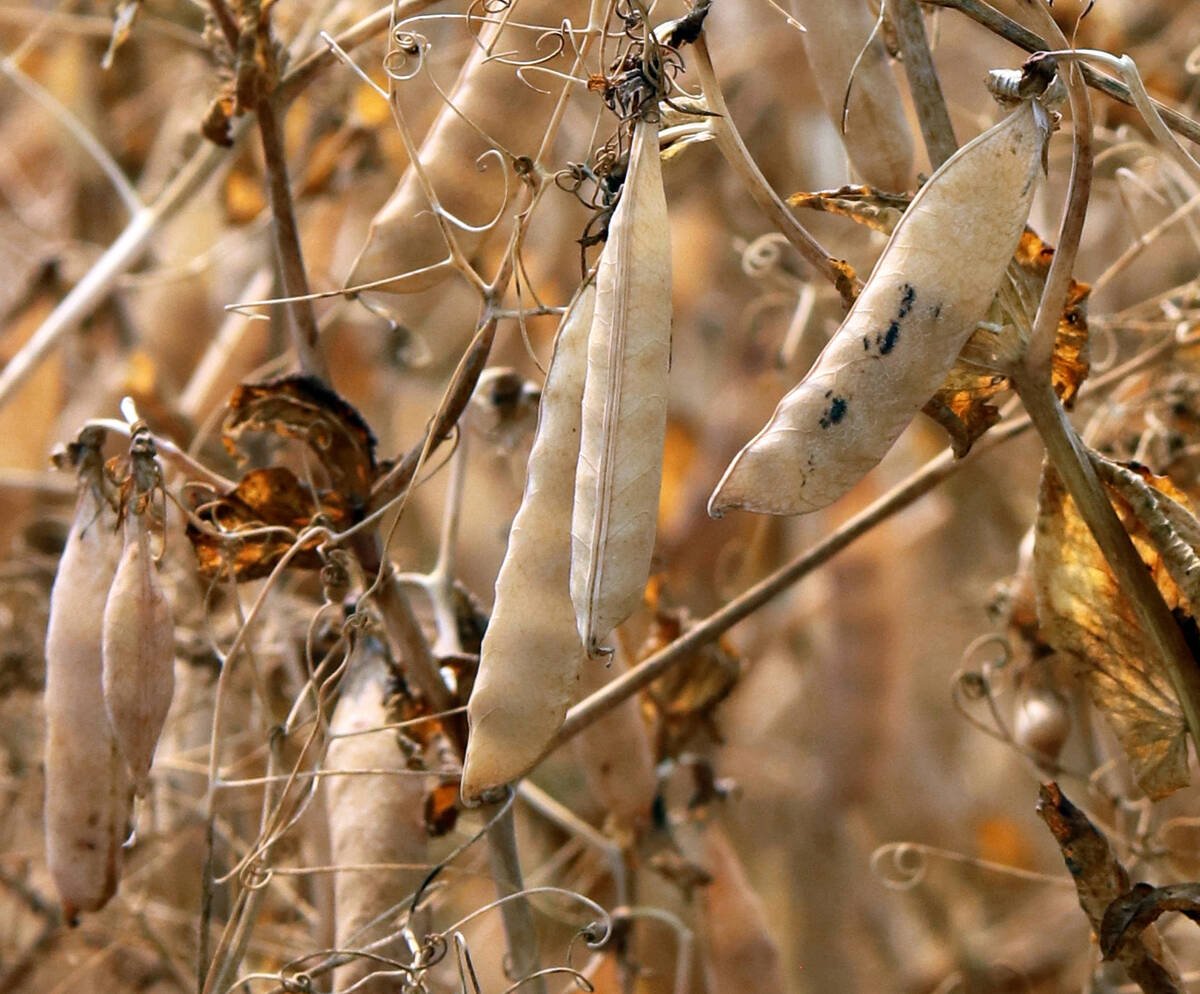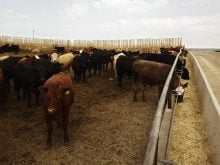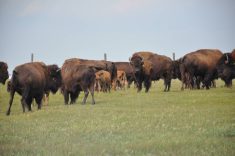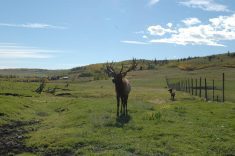TURNER VALLEY, Alta. – Eldon Eadie never gets tired of watching his Suffield Mustangs as they graze the rolling pastures of his EE Ranch near Turner Valley.
“There isn’t a horse in this bunch that wouldn’t be a credit to any breed,” said Eadie.
With a herd of 50, he has the largest herd of feral horses gathered in 1995 from the ranges of Canadian Forces Base Suffield in southeastern Alberta.
About 20 are original mares and stallions. He keeps three stallions and each maintains a group of mares and colts. He has every color but grey. An experienced horseman, he also raises Tennessee Walkers.
Read Also

Trump’s tariffs take their toll on U.S. producers
U.S. farmers say Trump’s tariffs have been devastating for growers in that country.
The mustangs were thin, full of parasites and as skittish as deer when they came to Eadie’s ranch, he recalls. A good feed of hay and loving care settled them in and tamed them.
Built for endurance rather than speed, the mustangs are sturdy with powerful legs and near perfect conformation. They stand from 14.2 to 16.2 hands high.
“I’ve owned about 300 horses and until last year I never called a vet for a Suffield horse. They just don’t get sick,” he said.
They are intelligent and easy to train. Eadie brags that he halter broke one of them within two minutes.
For the members of the Suffield Mustang Association, saving this unique animal was akin to preserving a piece of Alberta history.
“Five years later you would have a hard time finding these horses if people were not interested in preserving them,” said Eadie, who is president of the association.
The horses are scattered from Nova Scotia to British Columbia with the majority living in Alberta. There are 15 breeders offering different bloodlines.
The association records each fullblood horse by name and number.
Not all horse owners joined the Suffield Mustang Association of Canada but they have managed to record about 220 mares and stallions and 300 foals that are direct descendants of the mustangs.
The Suffield Mustangs evolved from horses turned loose by ranchers to roam on the grasslands of southeastern Alberta in the 1950s. They are a mixture of Quarterhorse, Thoroughbred, Morgan and Arabian, with some draft and pony types.
“People just turned out horses they didn’t want,” said Eadie. In those days, old horses weren’t worth enough to send to auction.
The military fenced off the base in 1964. The horses could not leave the 1,087-square-mile range and natural selection created the mustang.
By the mid 1990s the military wanted the horses off the land.
It became a controversial issue because some groups felt the horses should be left alone while others said they were trampling environmentally sensitive grasslands and sand hills.
A roundup was held in 1995 and the horses were sold for $347 to anyone who wanted one.
The new owners had to agree to keep the horses for one year. There was concern among association members that most animals would end up as horse meat because they were worth more on the meat market.
Eadie defends the roundup because he believes it saved the horses from extinction caused by to disease and starvation.
“Horses aren’t particularly well equipped to survive in this area. Only 30 percent of the foals lived. That’s a pretty high death rate.
“A horse is not totally suitable for wild conditions. They need care.”















